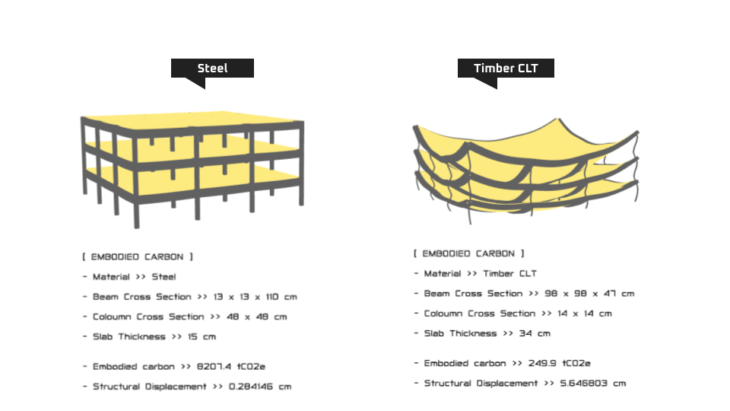
CONTEXT
Buildings and building construction are responsible for more than one third of global energy consumption and nearly 40 % of total direct and indirect CO2 emissions. When we look at all the new construction that is projected to take place between now and 2050, we see the critical role embodied carbon plays. There is incredible opportunity for embodied carbon reduction in these high-impact materials, Structure type, material selection, and specification.

Scope of Project
Overall, the embodied carbon is a vast subject covering many phases of the building project. We are covering the product and construction process phases. In the product phase there is subcategories being covered which are raw Material Extraction, material Transportation and Manufacturing of building elements. Also, in the construction process the subcategories are transport of material within the site and construction installation process.

Furthermore, the scope is defined in terms of each building part contributing in the carbon emissions. Structure and roof of the building is most responsible for the embodied carbon in the buildings.

Methodology and Setup
To have deeper analyzation of comparative results we have chosen a generic building typology. The parametric model of the building structure is prepared in the grasshopper environment. The model is translated into structural model for performing the FEA analysis. For solving the embodied carbon, we made our algorithm tailer to our research. Then the embodied carbon values and structure displacement values are used for multiple objective optimization. We are using ICE database for materials.


Embodied carbon and Structure Optimization (Solo Material-Hybrid Material)
The optimization is performed for the solo material on the building (Steel, Timber) and also with hybrid materials (Concrete + Steel and Concrete + Timber). The main elements are beams, columns and slabs. The target set for the optimization was structure displacement around 1 cm with the least embodied carbon.


Results
The optimized results of single and hybrid materials on building structure are compared to show the difference better. This method will help in structure system design in early design stage while keeping the embodied carbon low. In our research the timber has the least impact.

Building Rating
Different rating systems have been explored in the research. Here is how different materials are performing according to the international rating system for embodied carbon. The overall built area in our case is 3580 sqm,

Future Works
- To cover operational phase of embodied carbon
- Even though our guideline already defines a framework for the environmental comparison of embodied carbon, some aspects specific to new products (eco bricks, etc) are still to address.
Embodied Carbon & Structure Optimization is a project of IAAC, Institute for Advanced Architecture of Catalonia developed in the Master in MACAD 2021/22 by:
Students: Muhammad Mansoor Awais, Sidhant Chaudary
Advisor: Angelos Chronis